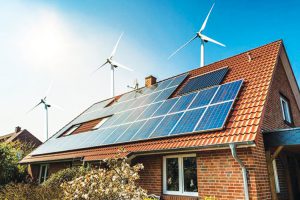BLOOMBERG
It took less than two weeks for TotalEnergies SE to put a massive green hydrogen project with Adani Group on hold after the Indian conglomerate was rocked by allegations of fraud.
The deal — part of a plan in which billionaire Gautam Adani’s clean energy business would have invested $50 billion over the next decade in the emissions-free fuel — remains in limbo, a victim of Hindenburg Research’s explosive short-seller report.
The fallout is unlikely to be limited to the Adani empire. The brouhaha over the business practices of the group — which became one of the country’s biggest investors in renewable energy after expanding from transport infrastructure — means there will likely be greater scrutiny of Indian corporate governance across the board.
Energy transition investments in India already lag behind other major nations, and now the cost of capital is increasing as global interest rates rise, while the Inflation Reduction Act is creating more opportunities for clean-power investors in the US and its free-trade partners. All that spells trouble for PM Narendra Modi’s goal to put India at the forefront of climate action.
“The markets are enforcing discipline on companies, including Adani, to reduce debt and bring in equity,†said Shashank Krishna, a London-based partner at law firm Baker Botts LLP, who advises clients on energy and infrastructure deals.
“Some projects that are borderline economically viable or may not have a strong business case will have to be shelved or reduced in size.â€
The multiplying headwinds are making the government’s goal of tripling clean electricity capacity by the end of the decade less achievable. New Delhi wants to increase the current 169 gigawatts to 500 gigawatts by 2030, taking its percentage of the total from 41% to almost two-thirds, a key milestone en route to net zero by 2070.
If it falls short of this target, the world’s third-largest emitter will be forced to keep relying on coal for longer. That’s bad news for a fast-warming planet, and also for an Indian economy that’s hoping to lure investment from multinationals that are under pressure to de-carbonise their supply chains.
The renewable energy ministry didn’t respond to an emailed request for comment.
While India installed 15 gigawatts of grid-connected wind and solar capacity last year, 44% more than in 2021, it’s still well short of what’s needed to reach the 2030 target. And, ominously for Modi, making a major increase in the level of investment was already proving tough before the Adani crisis.
Investment in the deployment of renewable energy technology rose about 4% to $11.5 billion in India last year.
 The Gulf Time Newspaper One of the finest business newspapers in the UAE brought to you by our professional writers and editors.
The Gulf Time Newspaper One of the finest business newspapers in the UAE brought to you by our professional writers and editors.
